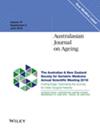Hot Stuff: Exploring the Association Between Hot Days and Emergency Department Presentations Amongst Older Patients
Abstract
Objective
Climate change has contributed to fluctuating temperature extremes over recent years. Higher temperatures increase mortality and morbidity in older patients. This study aimed to investigate temporal trends over the week and the association between hot temperatures and emergency department (ED) presentations amongst older patients.
Methods
We conducted a retrospective observational study using ED presentation data of persons aged 65 years or older from 2010 to 2021 attending at multi-centre secondary and tertiary referral institutions (n = 6) within South Western Sydney Health District, serving a population of ~820,000. The primary outcome was the rate of ED presentations amongst older patients on hot/very hot days/nights, compared to non-hot days/nights.
Results
There were 693,620 ED presentations of people aged 65 years or older across study sites over the study period. During this time, there were 160 hot days and 331 hot nights. The seasonal Auto Regressive Integrated Moving Average (ARIMA) model (adjusted for weekends/public holidays/Mondays/Fridays) showed an inconsistent effect across the sites studied for hot days (estimate range −0.11 to 1.37) and hot nights (estimate range −0.81 to 1.17). There were also significantly decreased presentations on weekends/public holidays and increased presentations on Mondays (p = 0.003).
Conclusions
Although we did not observe an association between heat and presentations, this may reflect regional variation and thus the broader risks of climate change for older people remain undetermined. Factors that influence reduced weekend presentations and Monday surges, irrespective of temperature variations, should be further investigated to identify opportunities for intervention.


 求助内容:
求助内容: 应助结果提醒方式:
应助结果提醒方式:


